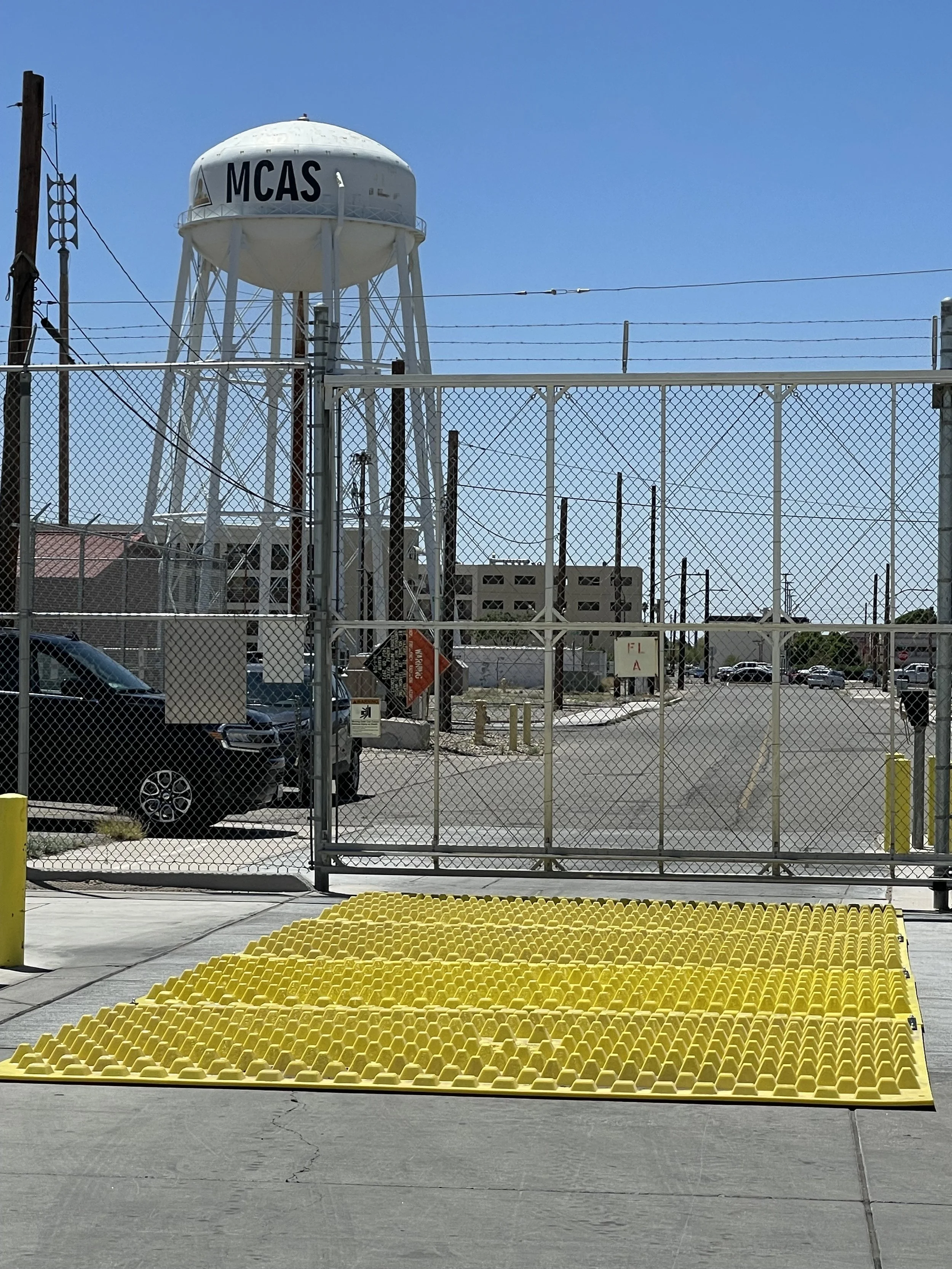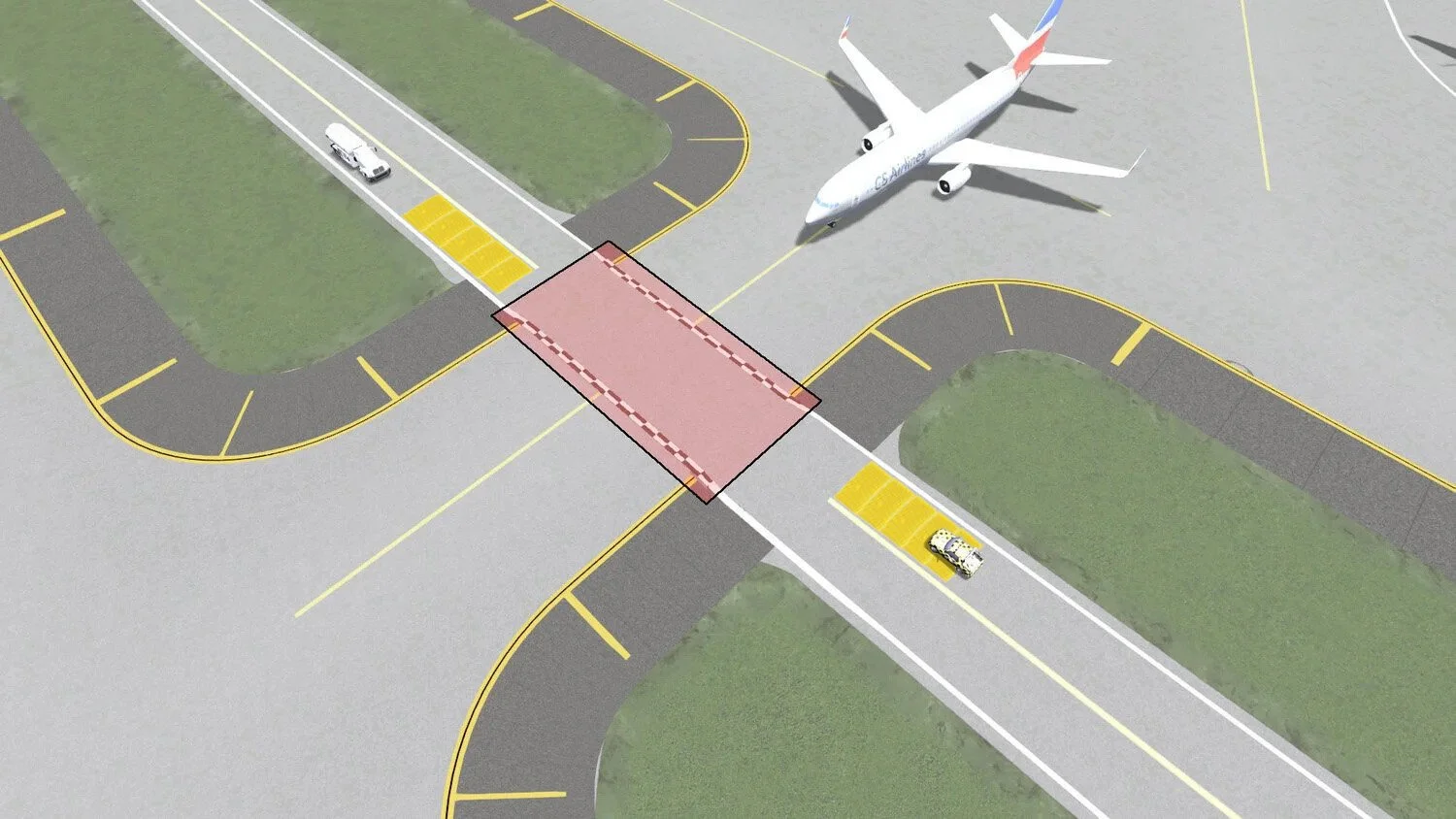Aviation FOD Prevention Mats
Proactive FOD Prevention For Access Roads & Taxiways.
Vehicle FOD Prevention
Done Right.
Proudly Made In The USA.

Effective Design
Innovative FOD Shaker
FODS Prevention Mats consist of a single layer of HDPE that is formed into staggered pyramids. The pyramids on the surface of the mats deform tires as vehicles pass over. Tire lugs are spread apart, and the trapped rocks and debris break loose. FOD collects at the base of the pyramids and does not come into contact with other vehicles.
Minimal Maintenance Required.
Call 844-200-3637 to Learn More.

MCAS Yuma conducted a trial to determine how the FOD Prevention Mat system compares to manual inspections. The system helped staff collect more debris while reducing total time per vehicle.


Stop FOD On Access Roads
A Line Of Defense
Vehicles travel on highways and nearby streets and then enter the airfield. FOD is tracked in tire lugs onto the apron and airfield where it becomes a safety hazard. FOD Prevention mats are placed on Access Roads to capture FOD before it can enter the airfield.
Stop FOD from entering taxiways and runways.
Call 844-200-3637 for more information.

Seamless Integration
No Additional Training
When FODS Mats are installed on Access Roads, all vehicles immediately benefit from the FOD prevention measure. No additional training is required for workers to utilize FODS.
No driver training required.
Call 844-200-3637 for more information.
One of the biggest battles that airfield managers and operators face is FOD prevention. FOD is a well-known acronym that stands for Foreign Object Debris or Foreign Object Damage. FOD is presented in many ways into a flight line. One of the most common ways is vehicle traffic entering from outside the airfield. These vehicles can consist of fuel trucks, maintenance trucks, crew vehicles and many more. The vehicle’s tires trap debris such as rocks, mud, vegetation, hardware (such as nuts, bolts, screws) and stones in the treads of the tire and potentially release them on the flight line. The released debris then poses significant safety concerns to property, equipment and personnel once introduced to the airfield. With the common effects of jet blast, rotor wash and propeller blast these items can be sent airborne with tremendous velocity and damage other aircraft, equipment, buildings and very easy harm or kill personnel. The other end of this danger is on the intake side. Even a small amount of debris sucked through the intake of a jet engine can damage the turbine blades and other sensitive components of the engine. The cost to repair an engine damaged from FOD can easily cost in excess of $1 million.
There are standard FOD prevention protocols that are typically focused on finding and clearing debris that is already on the airfield. Magnetic bars are attached to vehicles which are used to capture metalic debris. FOD Boss is a popular tool that uses ground friction to pick up small items left from vehicle traffic on a flight line. There are also FOD radar systems that scan the ground looking for anomalies that may indicate debris to be investigated. (Whether an airfield relies on a FOD sweeper, FOD walks or FOD radar, the risk is already present in that you are addressing debris that has been introduced from vehicles which has made its way to the flight line.)
FODS mats work to prevent any material from entering the airfield by clearing the tire treads prior to entry onto the flight line. The blunt nosed pyramids on the FODS mats are an engineered solution designed to manipulate the treads of the tires to release any trapped debris onto the mat itself allowing the vehicle to be cleared of any materials prior to entry. The FOD material that is released from the tire is then captured onto the mat and not accessible to successive vehicles that travel across the mats. This material is recoverable by airfield operations staff to catalog and be able to identify consistent sources of FOD debris for further protocol to address FOD root causes. This process of FOD prevention is a tremendous solution for any private, commercial or military airfield.
Vehicles travel along external roads and highways and then enter the airfield access roads as they travel to the apron. Access Roads often cross aircraft taxiways which may be marked with a "zipper." This intersection of vehicles and aircraft traffic poses a risk for vehicles to track external FOD directly into the path of aircraft. FOD Prevention Plans typically rely on manual inspections to prevent vehicle FOD.

Vehicle FOD High Risk Zone Shown In Red.
FODS mats do not change over time with vehicle passes and remain effective for many years of FOD prevention. FODS mats are secured directly to concrete and asphalt roadways by simple sleeved anchor bolts which hold the mats steady during vehicle travel. Each pyramid has a crush rating of over 20,000 pounds. This allows vehicles of any size to travel across the mats regardless of how small or large and clear FOD debris from any size tire tread without any loss of vehicle control or impact on driver safety.
Airports have historically used aqueous film forming foam (AFFF, or alcohol resistant AR-AFFF) as a fire-fighting agent. Many AFFFs contain Per- and polyfluoroalkyl substances (PFAS) which are toxic and non-biodegradable leaving soil contaminated. Although PFAS-free alternatives are being developed, toxic PFAS compounds remain in the soil around many civilian and military airfields.
Recent research on the effects of PFAS has prompted review from the EPA and other regulator bodies to study the distribution of PFAS contamination and seek techniques to mitigate the effects on the environment. Airport operators seek ways to responsibly manage this pollution source when conducting soil disturbing activities such as airfield construction and repair activity. When contamination is present, operators must use effective containment measures to avoid transferring PFAS into nearby water sources.
The Clean Water Act requires operators to prevent soil and other contaminants from entering storm drains and surface water sources. FODS Mats have been used to prevent contaminated construction site mud and debris from tracking out of construction sites onto roadways. Many construction projects, mining sites and industrial facilities face similar contamination challenges, and operators have turned to FODS to provide effective mechanism to prevent vehicle tracking control.
The simple act of driving across these mats will cause the tires to flex, helping to remove FOD from the tread of the tires.
it creates a slight vibration to loosen anything that may be on the undercarriage of the vehicle. FODS is a simple device that offers another opportunity to reduce debris onto the airport environment.
--- Mitchel D. O’Neal
Chennault International Airport
Director Of Operations

O'Hare International Airport
Chicago, IL

Sky Harbor Airport
Phoenix, AZ

Chennault International Airport
Lake Charles, LA